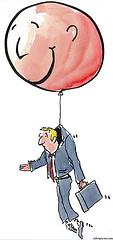Portrait illustration has always captivated the attention of numerous artists and art enthusiasts. Many people share a profound passion for the timeless personalities, unforgettable stories, and facial expressions and body language of individuals. Renowned artists of the past have created long-lasting works of art to pay tribute to the beauty of the human race.
Portrait illustration began with drawing simple lines and inspiring forms, and it involves various types of line art. Portrait illustration is often done using essential lines and usually does not include shading or texture lines. It’s best to start a portrait illustration with the element you are most comfortable with, whether it’s the outline of the face, eyes, or another feature. Many portrait illustrators use a projector to cast the image onto the canvas and then trace the line work. Alternatively, the image can be drawn on a sheet of acetate paper and transferred onto the canvas using a hard drawing tool, such as a ballpoint pen.
Coloring and adding quality tones to portrait illustrations are among the most challenging tasks, as you need to layer darker shades and lighter hues one after another. Some portrait illustrators prefer using mid-tones on the canvas, which are neither too dark nor too light. Their best approach is to paint the background with at least one solid color, as the dark tones and colors of the portrait will appear more realistic. Furthermore, adding a hint of redness to facial features like the nose and cheeks makes the portrait look warmer. The areas beneath the eyebrows, nose, and chin should be painted using red-brown shades.
On the other hand, the upper ridges of the eyebrows, cheeks, and upper lip should be colored with lighter tones, as these facial features catch most of the light. To add textures to facial areas like hair, ink pens can be highly beneficial.
Portrait illustration is a slow medium and requires a great deal of patience. If you become bored, don’t scribble the portrait illustration; instead, take a break and return when you’re ready to continue.
Manuel Marino is a seasoned Senior Producer, Music Composer, and Artist with over a decade of experience. He specializes in branded entertainment across various mediums, including video games, films, and advertising campaigns. With 20+ years as a game music composer, Manuel has worked on numerous platforms, creating diverse orchestral soundtracks. HIRE ME


 Manuel is a passionate, driven, and techsavvy AV technician,
Manuel is a passionate, driven, and techsavvy AV technician, 

